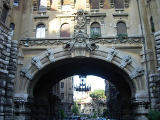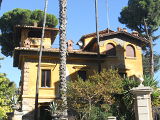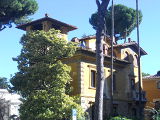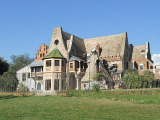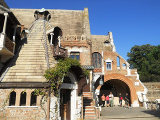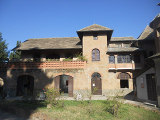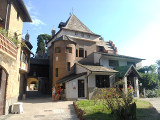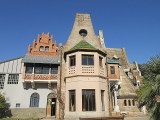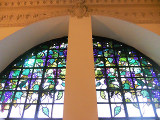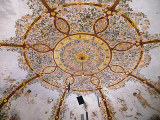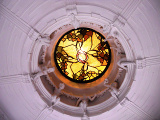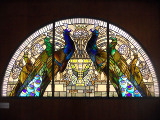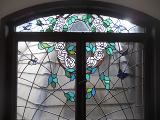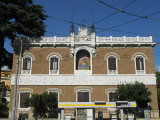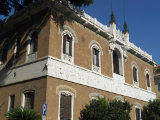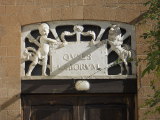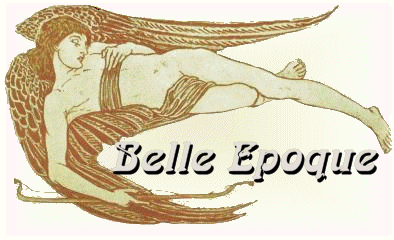The Belle Epoque in Europe
Italy
Rome
Text and all images © Francesco Barberini, Roma
In 1915, the planning for a new elegant residential area in Quartiere Salario, close to Piazza Buenos Aires, was launched by Società Anonima Edilizia Moderna. The project was awarded to the architect Gino Coppedè (Florence 1866 - Rome 1927) who was also requested to adopt classical references to the ancient Rome architecture.
The entrance to the Coppedè quarter is the complex of the twin Palazzi degli Ambasciatori (Ambassadors' Palaces) completed in 1921 and separated by a short diagonal street (via Dora) characterized by a big arch with an impressive iron chandelier.
Following the arch, via Dora heads towards Piazza Mincio, the square of Quartiere Coppedè showing in the middle the Fontana delle Rane (Frogs fountain, 1924) and many notable buildings designed by Coppedè. These are:

Piazza Mincio

Palazzo Coppedè
Piazza Mincio 2

Palazzo Coppedè
Piazza Mincio 2

Palazzo Coppedè
Piazza Mincio 2

Villini delle Fate
Piazza Mincio 3
One of the so-called Villini delle Fate (Fairy Cottages, 1925), much smaller compared to the buildings previously described, scattered in several nearby streets and marked by unusual shapes and fine decorations.

Palazzo del Ragno
Piazza Mincio 4
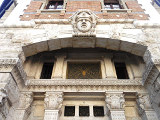
Palazzo del Ragno
Piazza Mincio 4

Palazzina Coppedè
via Olona 7
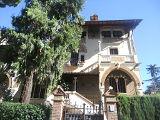
Palazzina Coppedè
via Olona 7
Palazzo del Ragno (Spider's Palace - located Piazza Mincio no. 4 and built between 1916-1926), named in this way thanks to the mosaic of a spider above the main entrance; this building is also characterized by a medieval-themed fresco above the loggia.
Casina delle Civette (House of the Owls)
1840 Giuseppe Jappelli
1908-13 Enrico Gennari
1914-20 Duilio Cambellotti, Vincenzo Fasolo,
Paolo Paschetto, Umberto Bottazzi, Cesare Picchiarini
Located within the monumental Villa Torlonia (a former residence of the noble roman family Torlonia since the beginning of the XIXth century), this building was originally known as "Capanna Svizzera" due to the resemblance of a Swiss-style Chalet.
Between 1908 and 1920, the building was enlarged and totally rebuilt in eclectic style and was enriched by the precious stained glasses made by Duilio Cambellotti (Rome, 10 May 1876 - Rome, 31 January 1960), an eclectic artist who played a major role within the Art Nouveau (in Italy called Liberty) movement in Rome.
The recurring theme of the little owl (civetta) which finally led to the current name of the building can be seen in a mosaic above one of the entrances of the building as well as in one of the glass windows decorated by Cambellotti.
Villino Ximenes
This building, erected between 1891 and 1902, has been the former residence of the Sicilian sculptor Ettore Ximenes
(1855-1926), and later became property of a catholic institute which regretfully replaced the previous Art Nouveau frescos
in the main façade with a religious-themed one showing the Virgin.
Among the most notable elements, the white frieze running horizontally which determines a strong contrast with the brown
tuff of the building and several pottery decorations.
